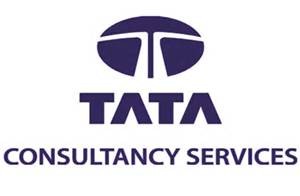 11.What is the difference between class and structure?
11.What is the difference between class and structure?
Structure: Initially (in C) a structure was used to bundle different type of data types together to perform a particular functionality. But C++ extended the structure to contain functions also.
The major difference is that all declarations inside a structure are by default public.
Class: Class is a successor of Structure. By default all the members inside the class are private.
12. What is ponter?
Pointer is a variable in a program is something with a name, the value of which can vary. The way the compiler and linker handles this is that it assigns
a specific block of memory within the computer to hold the value of that variable.
13.What is the difference between null and void pointer?
A Null pointer has the value 0. void pointer is a generic pointer introduced by ANSI. Generic pointer can hold the address of any data type.
14.what is function overloading
Function overloading is a feature of C++ that allows us to create multiple functions with the same name, so long as they have different parameters.Consider the following function:
int Add(int nX, int nY)
{
return nX + nY;
}
15.What is function overloading and operator overloading?
Function overloading: C++ enables several functions of the same name to be defined, as long as these functions have different sets of parameters (at least as far as their types are concerned). This capability is called function overloading. When an overloaded function is called, the C++ compiler selects the proper function by examining the number, types and order of the arguments in the call. Function overloading is commonly used to create several functions of the same name that perform similar tasks but on different data types.
Operator overloading allows existing C++ operators to be redefined so that they work on objects of user-defined classes. Overloaded operators are syntactic sugar for equivalent function calls. They form a pleasant facade that doesn’t add anything fundamental to the language (but they can improve understandability and reduce maintenance costs).
16.what is friend function?
A friend function for a class is used in object-oriented programming to allow access to public, private, or protected data in the class from the outside.
Normally, a function that is not a member of a class cannot access such information; neither can an external class. Occasionally, such access will be advantageous for the programmer. Under these circumstances, the function or external class can be declared as a friend of the class using the friend keyword.
17.What do you mean by inline function?
The idea behind inline functions is to insert the code of a called function at the point where the function is called. If done carefully, this can improve the application’s performance in exchange for increased compile time and possibly (but not always) an increase in the size of the generated binary executables.
18. Tell me something about abstract classes?
An abstract class is a class which does not fully represent an object. Instead, it represents a broad range of different classes of objects. However, this representation extends only to the features that those classes of objects have in common. Thus, an abstract class provides only a partial description of its objects.
19.What is the difference between realloc() and free()?
The free subroutine frees a block of memory previously allocated by the malloc subroutine. Undefined results occur if the Pointer parameter is not a valid pointer. If the Pointer parameter is a null value, no action will occur. The realloc subroutine changes the size of the block of memory pointed to by the Pointer parameter to the number of bytes specified by the Size parameter and returns a new pointer to the block. The pointer specified by the Pointer parameter must have been created with the malloc, calloc, or realloc subroutines and not been deallocated with the free or realloc subroutines. Undefined results occur if the Pointer parameter is not a valid pointer.
20.What is the difference between an array and a list?
Array is collection of homogeneous elements. List is collection of heterogeneous elements.
For Array memory allocated is static and continuous. For List memory allocated is dynamic and Random.
Array: User need not have to keep in track of next memory allocation.
List: User has to keep in Track of next location where memory is allocated.
Array uses direct access of stored members, list uses sequential access for members.